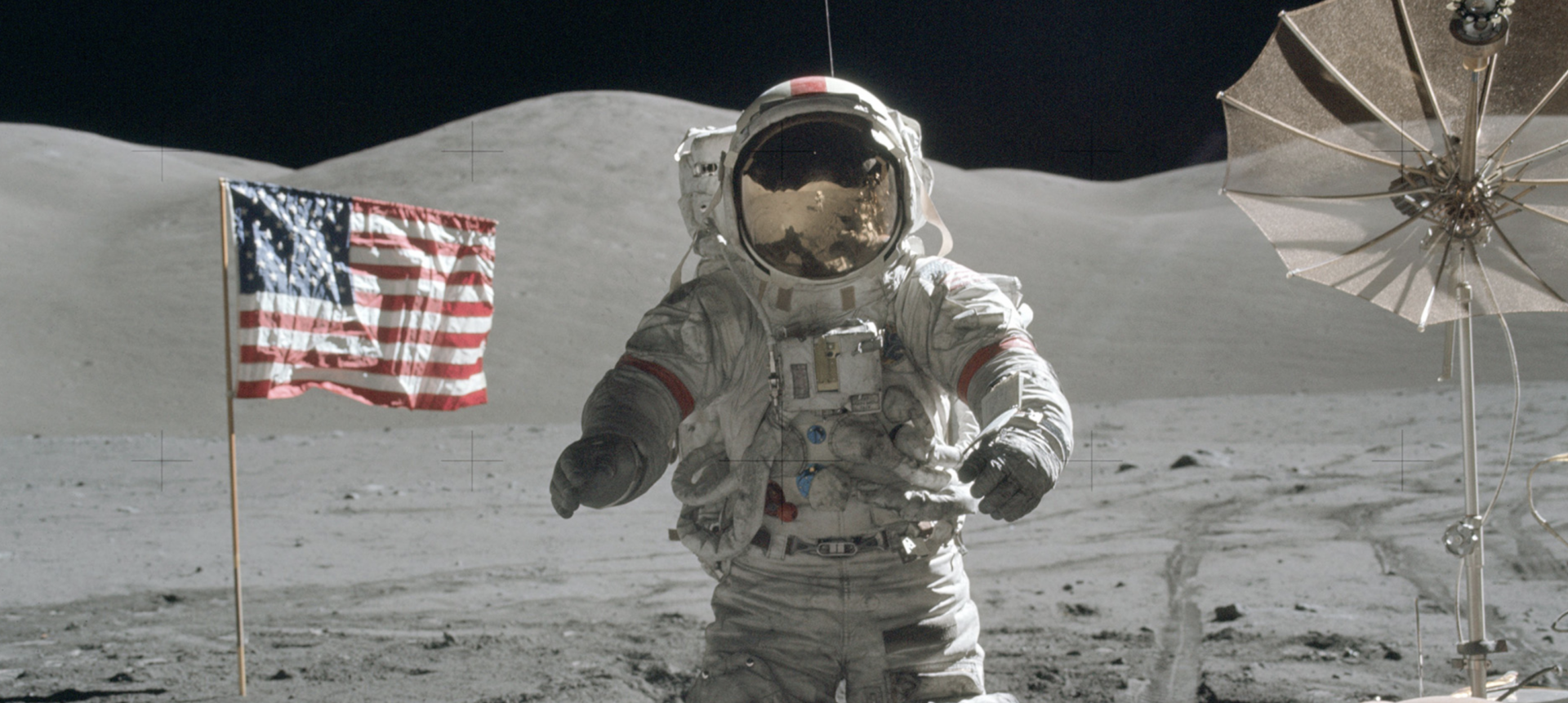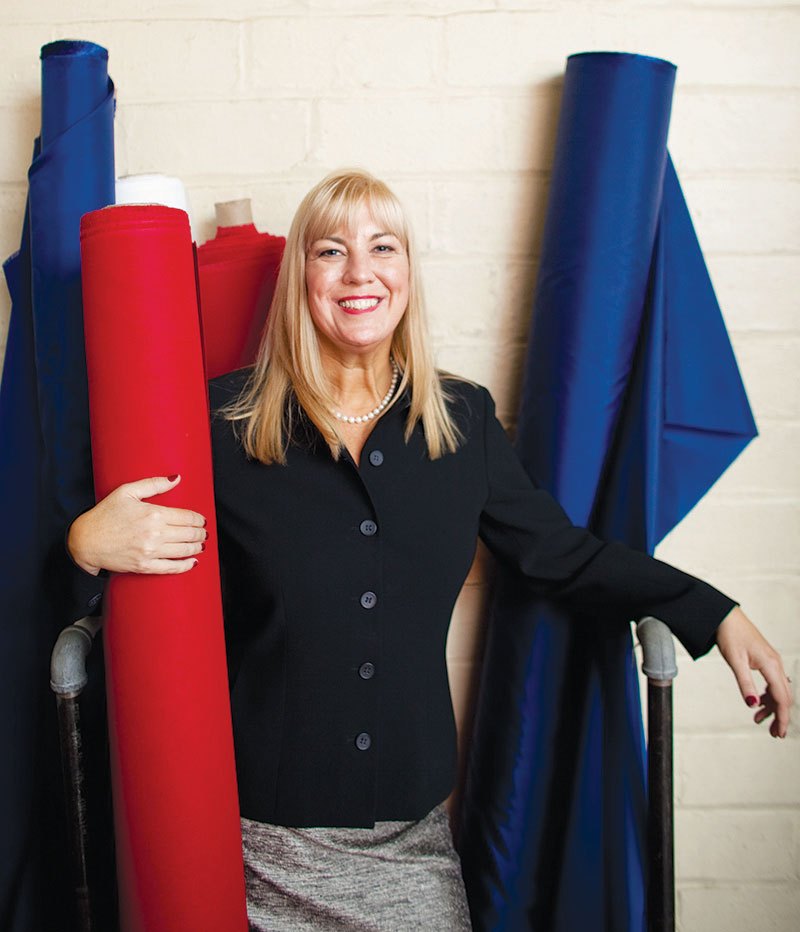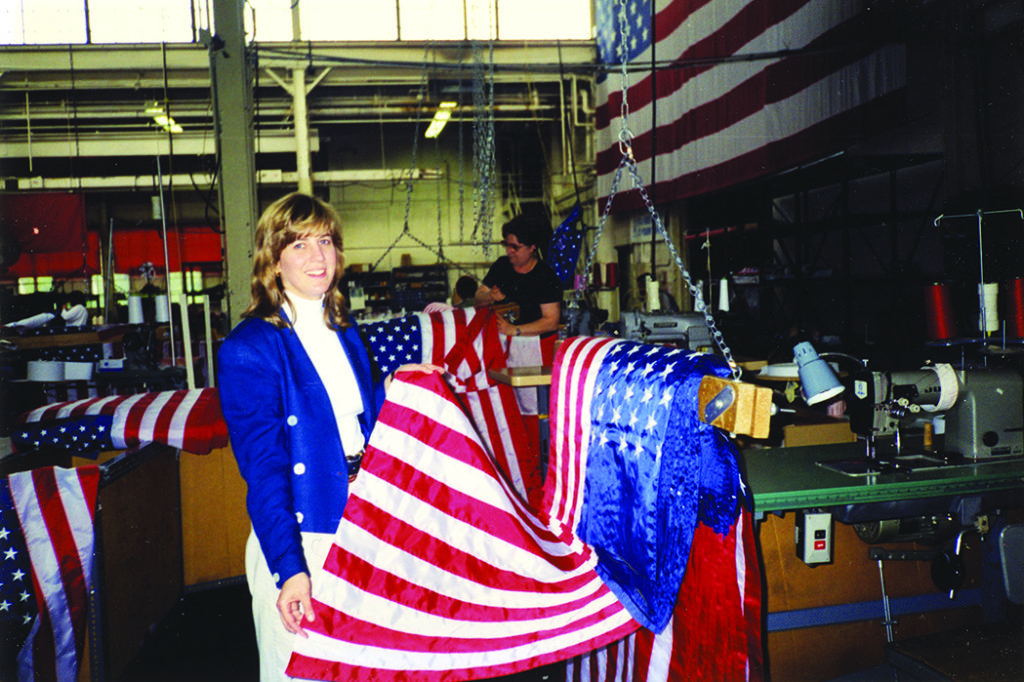

The moon landing. The Battle of Iwo Jima. Abraham Lincoln’s funeral. These indelible historic moments are united by the stirring presence of the star-spangled banner, a patriotic symbol of America. Remarkably, one company made flags for all these events and countless more: Annin Flagmakers.
With 500 employees across three factories in Virginia and Ohio, Annin is the largest flag manufacturer in the U.S. Founded in Lower Manhattan in 1847 by Alexander Annin, it’s also the oldest. And FIT has played a role in its story. Sandy Van Lieu, Manufacturing Management ’94, executive vice president and co-owner of the Roseland, NJ-based company—and the great-great-great-granddaughter of its founder—studied manufacturing at FIT in order to become a better manager at the firm.
“We learned how to take apart and put together a sewing machine, how to train a sewing-machine operator, and how to lay out a plant,” Van Lieu recalls. “It gave me credibility with the employees. They said, ‘She’s not just some owner’s kid.’”
She put those skills to work as soon as she graduated, in 1994. In that first year on the job, she reduced the lead time for making a custom flag from three months to three weeks. Now it takes a single day. Currently, she manages relationships with Annin’s major customers, such as Walmart and Target, and she helps steer the company, ensuring its longevity as a profitable and ethical business.

Scrubbed of its meaning, any flag is merely a textile, one that must be durable and supremely colorfast. Annin makes its high-end flags from nylon 66, a formulation that is extra sturdy yet still lightweight enough to flutter in a gentle breeze. Premetallized acid dyes, mixed in an in-house chemistry lab, make the flag UV-resistant, and another chemical is applied to protect against acid rain.
The stripes are stitched together and the stars are embroidered with a poly-cotton yarn. The fly hem, farthest from the flagpole, is reinforced with up to six rows of lockstitching to prevent fraying.
Digital printing is used for less expensive flags, as well as those manufactured in small quantities, such as flags for U.S. states and territories and U.N. member nations, as well as custom flags for sporting events, religious and social organizations, and the military.

Though dominated by only a handful of companies, the flag industry is fiercely competitive. But because of Annin’s heritage and the national pride inherent in every flag, Van Lieu feels a responsibility to use ethical business practices, manufacturing domestically, hiring fairly, and promoting from within.
“It’s a different feeling when you make a flag—I can’t explain it,” she says. “We hold ourselves to a higher standard.”
This story originally ran in the spring 2016 issue of Hue Magazine.